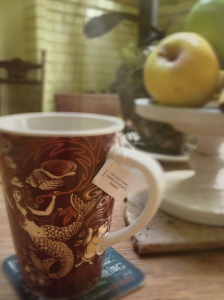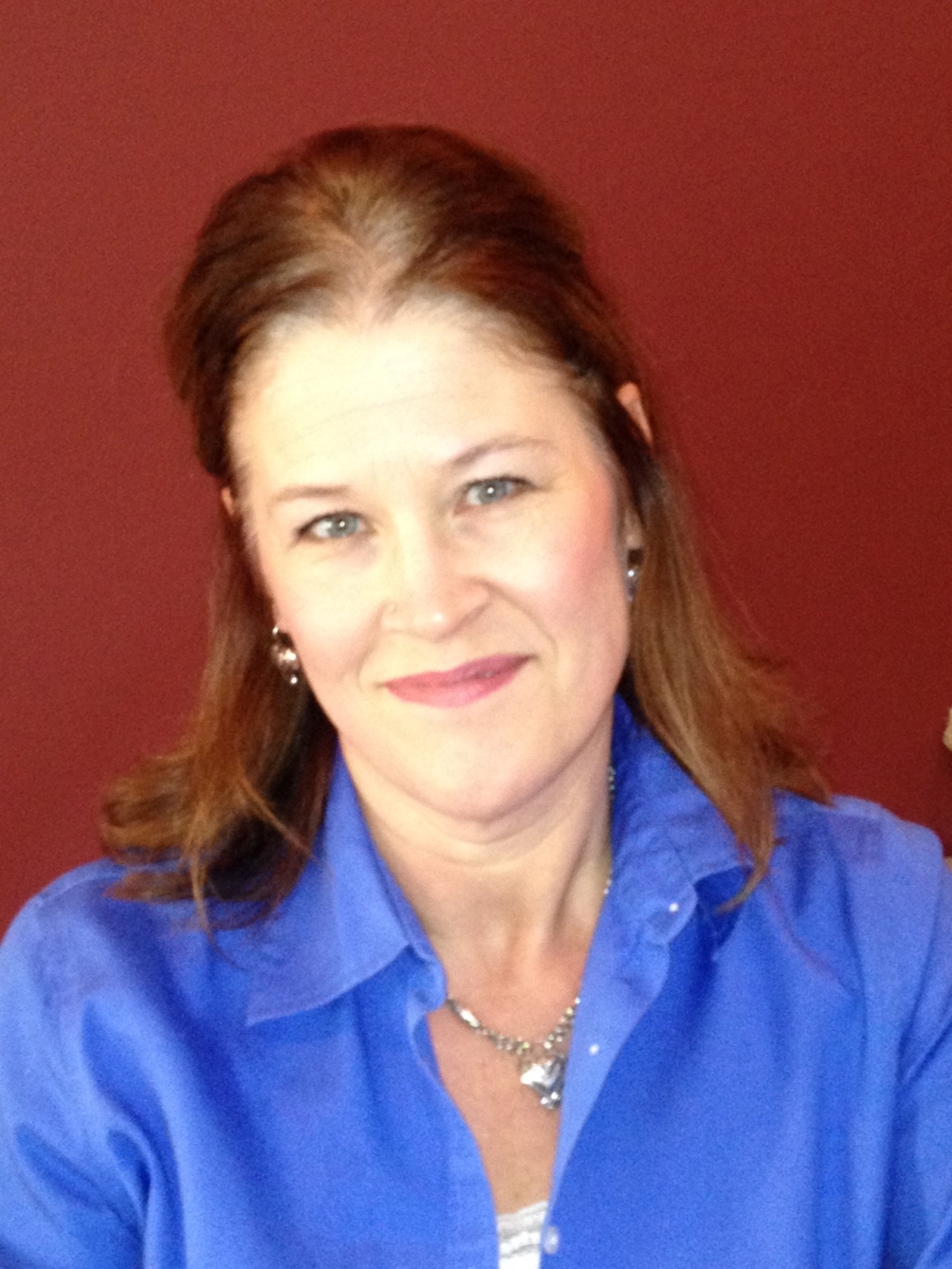I’m Annmarie – a busy woman juggling a career, starting up a business, being a mom, wife, daughter and friend. In 2003, I had a mental meltdown and couldn’t hide from PTSD anymore. I gathered all I knew about life coaching, psychology and PTSD and decided to fight.
What I found out was focusing entirely on my mind was making it worse, seeing my therapist once a week wasn’t enough, and I couldn’t make my regular doctor understand the physical pain I was feeling. Then, I discovered a holistic approach that incorporates an entire team of helpful professionals and support people. In three short years, I was 100% symptom free and have been for almost nine years. But you might be surprised to know . . .
Starbucks saved my life.
Join me here at PTSD Relief for a series of four articles that talk about making real change happen in healing the lives of PTS survivors – veteran and non-veteran alike. Like what you hear? Pass it along to a friend or colleague. We’re reaching out, hoping to walk through an open door. Plus, you never know who’s reading . . .
Part Four
Expect more than others think possible.
~ Howard Schultz, CEO Starbucks
In this four-part series, we’ve cared more than others think wise, risked more than others think safe, dreamed more than others think practical, and now, expect more than others think possible.
You’ve discovered Post Traumatic Stress (PTS) is not only a veterans’ crisis, it’s a childhood crisis, a workplace crisis, a family crisis. Our lack of knowledge is costing us BILLIONS and while people in high places try to figure it out, people YOU and I know are dying every hour.
The ‘system’ we assumed would be there to care for the most vulnerable has been downsized and budget cut into non-existence, leaving those of us who are willing and able to coordinate a workable, practical solution.
What Does Starbucks Have To Do With All Of This?
For more than a decade, I’ve held a special admiration for Howard Schultz, the man behind the philosophy that birthed what many Americans now enjoy as their ‘third place.’ We have home, work and Starbucks – a community hub and gathering place where people meet, get informed and get involved. For this reason, I believe Starbucks can be used as a ‘scale for good.’
Allow me to introduce you to the heartbeat behind your morning cup of coffee.
In March, Howard Schultz spoke out raising awareness for more to be done to find solutions to the PTS epidemic. He also backed it up with $30 million dollars.
What does a coffee mogul know about the hearts and minds of the American people, you might ask?
In his call to save the American Dream (Fortune 4/3/12), Schultz revealed a heart for people. He went so far as to post an Open Letter to the American public, purchasing full-page ad space to spread his message, pleading with us to save ourselves (http://www.starbucks.com/individsible). Today, I hear his message as a call to join together in being a part of the PTS healing solution. Here’s what he had to say:
I love America, but we all know there is something wrong. The deficits this country must reconcile are much more than financial. . . . We can’t be bystanders anymore. It’s a dangerous time . . . I’ve been the ultimate beneficiary of the American Dream and that dream is now in jeopardy. I can’t just stand by. . . .
It’s time . . . to come together with courage, creativity and generosity of spirit. . . . The freedom to dream and the opportunity to create a better life – not just for ourselves, but for each other has always defined our great nation. . .
(Starbucks has) always tried our best to honor our responsibility to the communities we serve. . . . Our veterans are not being welcomed home with the level of support they deserve. . . .
America’s history has showed that we have accomplished extraordinary things when we act collectively, with courage, creativity and generosity of spirit – especially during trying times. . . as citizens, let’s all get more involved.
Please, don’t be a bystander. Understand that we have a shared responsibility in solving our nation’s problems. We can’t wait for Washington.
~ Howard Schultz, CEO Starbucks
Although his message at the time was in reference to putting citizenship over partisanship during the 2012 election, it just as easily could be a clarion call to support a mental health transformation to cure PTSD – a cancer eating away at the soul of America.
Why It Will Work: Using Starbucks As A Scale For Good
Demonstrated by his success with Starbucks, Schultz recognizes the importance of balancing profitability with a social conscience. He’s demonstrated that in order to be of highest service, profitability is essential to future success – the perfect mindset for sustainable, transformative change. Moreover, the Starbucks framework inspires the creation of a hub that could coordinate a holistic restoration of the American people.
With Mr. Schultz’ guidance, a foundation could be formed to influence a mental health transformation inspired by the same structure that makes Starbucks great. Combined with the PTSD Self Help system, this foundation could offer:
- Access to practical, low/no cost suggestions for survivors actively looking to heal PTS through an interactive, DIY, step-by-step process reachable 24/7 by anyone with an internet connection
- The opportunity for individuals to make positive contributions to our communities through a nationwide network of PTSD informed professionals in the healthcare industry and healing coaches – former survivors, trained to guide, support and educate.
A Personal Message to Howard Schultz
I am so happy and grateful for the opportunity of having been a Starbucks partner. At a time when I needed a great work environment of respect, dignity, and diversity, your dream was there for me to step into.
For six years, you did more than give me a job. Your belief in the genuineness of the human spirit gave me the freedom to re-claim self confidence, independence through the wholeness of a balanced work-life schedule, and the financial support to pursue healing from PTS.
Without your Starbucks vision, PTSD Self Help wouldn’t exist. It’s likely I, too, would have become a statistic. Unknowingly, before ever earmarking a dime, you nurtured and birthed the very thing you’ve been looking for – one possible solution to the PTS crisis.
Who knew that the structure, core values and business philosophy of a tiny coffee company out of Seattle could become the template for a mental health revolution that could transform the lives of so many? Who knew that a 3a.m. opening shift at a corner coffee shop would help save the life of this author?
I welcome the opportunity to begin a conversation about how your vision for Starbucks, combined with PTSD Self Help, might provide a framework for a mental health transformation.
I look forward to hearing from you.
Respectfully,
Annmarie Huppert, Partner #1195279
Become Part Of The Conversation
At the end of the day, the only number that matters is one – one life, one family, one job, one soul, one conversation, one ‘share’. Here’s what you, dear reader, can do to help:
- Share! Can we get 1000 Shares by June 2? Reach out to Howard Schultz by sharing this article on the Starbucks Facebook page (see instructions below)! You’ll give back by letting him know his vision has already inspired an answer to the PTS crisis.
- Change! Do your thoughts and conversations create barriers or bridges? Simply becoming informed about PTS stigma can change how we think and speak about mental health and wellness. Your awareness alone removes obstacles to people looking for help. It’s time to change. Here’s how . . .
PTSD Stigma: What Does It Sound Like?
Thanks for your support! I’ll keep you posted.
Peace,
Annmarie
Can We Get 1000 ‘Shares’?
Please join us in reaching out to Howard Schultz. We’re looking to begin a conversation about delivering practical, real-time solutions for PTS relief by reaching 1000 ‘shares’ on the Starbucks Facebook page by June 2. Won’t you take 2 seconds to ’share’? Here’s how:
- Copy this link (highlight; then right click): https://aehuppert.wordpress.com/2014/05/01/join-the-conversation-ptsd-solutions-starbucks-coffee-facebook/
- Paste link in a new post on the Starbucks FB page (right click to paste)
- ‘Like’ their page
Click here to ’share’ and ‘like’ NOW
Need To Catch Up?
Starbucks Coffee, The PTSD Epidemic & You
The Risk of Ignoring the PTSD Epidemic: Mortality, Money & Morals
Should the Middle Class Clean Up the Veterans Administration’s PTSD Mess?






























